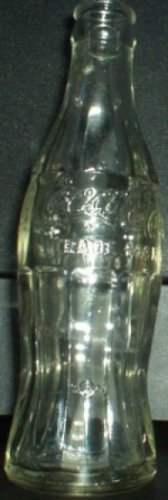LaidBackJack
Well-Known Member
- Joined
- Aug 4, 2004
- Messages
- 63
- Reaction score
- 0
- Points
- 0
Hey, I'm just a country boy I gotta make do with what's on hand. In the spirit of Edison, I have tried most everything imaginable... at one time or another, trying to clean up dug/dirty bottles. Carburetor cleaner works great, too great in fact. Same thing with Berryman's B12 Chemtool. Paint remover, Acetone, Lacquer Thinner, Zylol, etc I've tried them all. Not having a polisher, or knowing anyone with one, I've settled on hand methods of trying to improve some bottle's cosmetic qualities. For primary inside cleaning I use copper pellets cut from old electrical cable...pretty standard treatment I guess. Vinegar sometimes. Let it sit for awhile, then shake the thing for 15 minutes while watching the news or something. But the thing I'm using now, that works the best after the bottle is clean & I'm faced with discoloration or stains on the glass....... is Naval Jelly & Silicone Spray.. The Naval Jelly will definitely remove any iron or mineral stains, and doesn't attack the glass. It even seems to soften some of those iridescent discolorations that dug bottles will get. On some bottles, the Naval Jelly is miraculous, but it won't help scratched or opaqued glass. I let the Jelly sit thick on the glass for 24-48 hours before washing & scrubbing clean. Then when it's completely clean & dry, spray inside & out with Silicone spray lubricant....available at most any hardware store. I let the silicone sit on there for a while as well, and swish it around the inside...but then I wipe it & buff it, & the result is always way better than it started out. The silicone spray is far superior to mineral oil, AFAIC for glossing up bottles. Perhaps I have deluded myself, or maybe sniffed too many different chemical fumes trying to find the right stuff....but I'm convinced that these two ingredients have improved many of my bottles & at little cost & labor....better & more reliably than anything else I have tried so far. I really don't like polished bottles, and quite often just a moderate improvement in visual condition makes a bottle dramatically more interesting & attractive to me. I'll continue to experiment, but for now any bottle I want to try & upgrade gets this treatment. I wonder if anyone else has used these products for this purpose?


